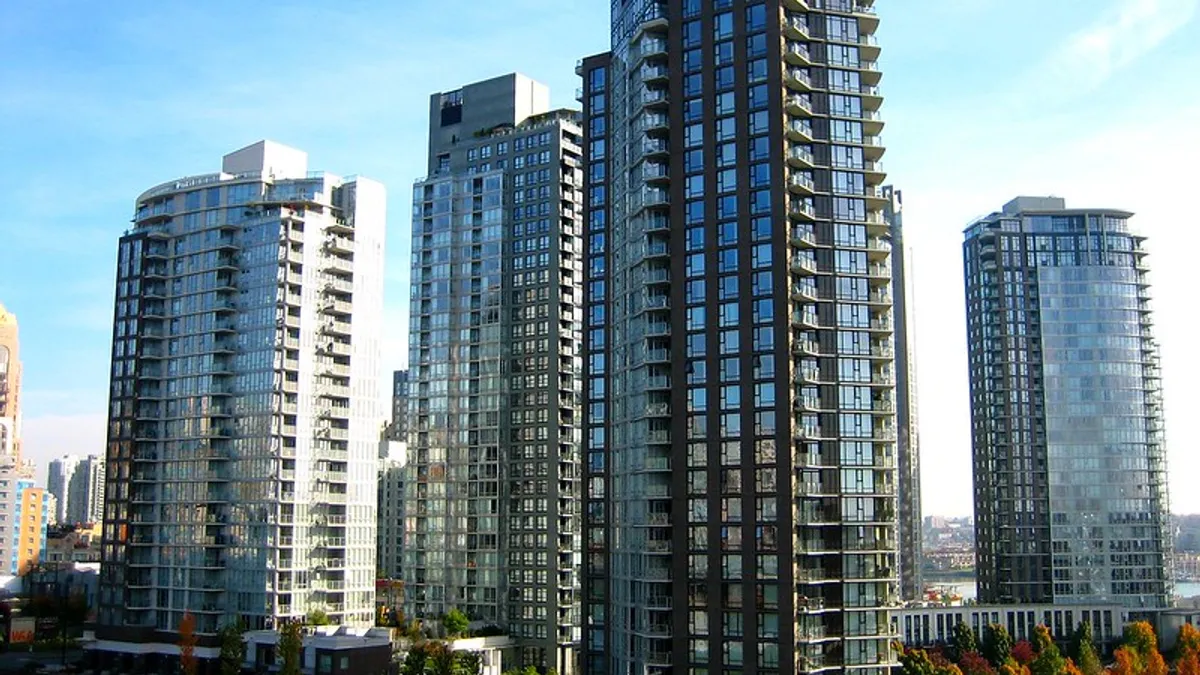Sara Baldwin is the electrification policy director at Energy Innovation, an energy and climate policy research and analysis firm.
Buildings generate around a third of U.S. greenhouse gas emissions, with direct fossil fuels emissions from appliances and heating constituting about 12% of the total.
One code-setting entity capable of reducing those figures, the International Code Council (ICC), is shirking its responsibility. After repealing climate smart code improvements and disenfranchising local and state government representatives the ICC failed to end fossil fuel reliance in new buildings, locking in mounting costs, climate risks and health impacts.
Building codes and processes need a major retrofit.
Decarbonizing buildings is key to addressing climate, avoiding higher costs and untenable risks
We must reduce emissions at least 80% below 2005 levels by 2050 to align with the 1.5 degree Celsius scenario that avoids the worst climate change impacts. The building sector is far from achieving those reductions, and new construction improvements are key to getting on track in a cost-effective way.
Every new building stands at least 50 years and leaves a legacy of energy consumption, consumer costs and pollution. Codes impact occupant safety, health and comfort. They also impact the ease and cost of adopting climate and resiliency solutions like efficient electric appliances, solar panels, electric vehicles, or back-up batteries. Retrofitting existing equipment is inherently more costly and difficult than building smart from the start.
Climate change increases severe weather events each year, increasing the risk of property damage – already by the end of 2018, for instance, the U.S. had sustained more than $1.6 trillion in losses from natural disasters since 1980. Continued fossil fuel reliance in buildings locks in higher emissions and decades of damage, while burdening consumers with volatile and rising costs. Outdated codes disproportionately burden low-income consumers, communities of color and frontline communities with higher costs, greater health risks and increased vulnerability to extreme weather.
We need more efficient buildings, but cannot dig out of the climate hole with efficiency alone.
We must shift our buildings to all-electric, powered by an increasingly clean grid. Rocky Mountain Institute research shows all-electric new homes are a win-win for consumers and the climate, reducing costs and emissions. Meanwhile, an LBNL analysis found electrification and efficiency measures are needed to reduce building sector emissions up to 78% by 2050. In other words, we need it all, but current building codes are severely lagging.
Building codes and code processes are fragmented
The U.S. does not have a standardized approach to building codes. No federally issued standard exists, and every state and local government determines which codes to adopt and enforce. According to FEMA, close to 10 million of the nearly 14 million buildings added between 2016 and 2040 will be built to ICC codes.
The ICC’s multi-layered, time-intensive code setting process — including updating to the International Energy Conservation Code (IECC) — results in its formal updated base code and several appendices which are not included in the base code, such as voluntary “stretch” codes. For states and local governments that adopt the ICC code, the base code is the standard for all new buildings, unless otherwise specified.
During the most recent code cycle, after being explicitly encouraged by the ICC to engage, local governments successfully voted for several base code improvements deemed critical to achieving climate goals, including provisions enabling all-electric buildings. But the victory was short-lived.
ICC members representing fossil fuel interests and developers lobbied to appeal the climate-favored improvements and modify the voting process. While the ICC rejected the request to repeal efficiency improvements, they repealed the all-electric measures. They also curtailed future local government voting by modifying the IECC development process, limiting opportunities for local governments to shape future IECC versions. The effects are far-reaching, making it harder for communities to stop fossil fuel expansion in new buildings.
Time for a retrofit
As the climate clock ticks, we cannot wait for fragmented codes and arcane processes to get us where we need to be within the decade. Current codes inherently skew to the least-common denominator for buildings, without considering public health and climate costs. No easy fix is at hand, but some new approaches may activate change.
-
Introduce codes innovation through competition. The ICC united three competing code-setting entities in 1994, aiming to unify the building code trade. The time is right to unite building decarbonization experts, architects, and green builders to establish a new code-setting body focused on building decarbonization. The recently released Building Decarbonization Code is a strong starting point. Enabling efficient, solar-ready, all-electric, and electric vehicle-capable new buildings would support cheaper deployment of known climate solutions.
-
Increase transparency and oversight: If the ICC influences nearly 10 million buildings, investigating their practices and ties to fossil fuel and developer interests may be overdue. A Congressional investigation could identify ICC business practice shortcomings and provide greater transparency.
-
Adopt a strong national appliance standard: Federal efforts to dramatically improve efficiency requirements of common appliances and heating and cooling equipment can help rid buildings of fossil fuels, while avoiding federal pre-emption arguments in code-setting discussions.
-
Enact equitable electrification programs: The federal government, states, local governments, and utilities can expand all-electric home programs and incentives for homebuilders and homebuyers – this will create market demand while helping train contractors and distributors.
-
Complement electrification programs with resilience programs: If buildings are our lifeline during emergencies, we must prioritize resilience. The above entities should create complementary resilience-focused programs for solar, storage, and demand response. Green Mountain Power has had success here, demonstrating that customer-sited resources can be called upon as needed (and compensated) to provide grid support. Homes equipped with resiliency technologies will help consumers bounce back after outages and avoid worst-case scenarios.
-
Ramp up building code training: Governments leading the building decarbonization charge should ensure building code officials have sufficient staff and resources to do their jobs. Those enforcing code will also benefit from continuing education and training, and increased vigilance ensures buildings are reducing emissions and saving energy.
Whatever paths we chose, we must demand that buildings are built smart from the start. This climate adaptation strategy is critical to mitigating global warming and addressing inequities. The ICC and those setting building codes need to adapt to the times or step aside.
Contributed pieces do not reflect an editorial position by Smart Cities Dive.
Do you have an opinion on a similar issue or another topic Smart Cities Dive is covering? Submit an op-ed.


















